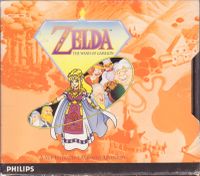| Don't like the ads? Then create an account! Users with accounts have more options than anonymous users. |
Difference between revisions of "Philips CD-i"
(released template) |
ClassicMundy (talk | contribs) (Date fixes + sources for CD-i dates) |
||
| Line 2: | Line 2: | ||
|image=[[File:Philips CDi.jpg|300px]] | |image=[[File:Philips CDi.jpg|300px]] | ||
|type=Home video game console<br>Media player | |type=Home video game console<br>Media player | ||
|released={{released|USA| | |released={{released|Japan|April 25, 1992<ref>[https://cdii.blogspot.com/2007/07/cd-i-in-japan-philips-artspace-denshi.html CD-i in Japan - Philips Artspace and Japan Interactive Media] (cdii.blogspot.com)</ref>|USA|October 15, 1991<ref>[https://cdii.blogspot.com/2020/10/onthisday-cd-i-officially-was-launched.html #onthisday CD-i officially was launched 29 years ago in the USA, the first region that CD-i was active in] (cdii.blogspot.com)</ref>|Europe|June 24, 1992<ref>[https://cdii.blogspot.com/2021/06/rare-cd-i-records-94-philips-partner.html Rare CD-i Records #94 - The Philips Partner Programme - Paris, June 24th 1992 (today we celebrate the European CD-i launch!)] (cdii.blogspot.com)</ref>}} | ||
|media=Compact Disc | |media=Compact Disc | ||
}} | }} | ||
| Line 10: | Line 10: | ||
Nintendo partnered with Sony to create a CD-ROM peripheral for the [[Super Nintendo Entertainment System]] and later Philips. The peripheral was cancelled, and as a compromise, Nintendo allowed Philips to create games based on a few of their franchises, including the ''Mario'' series and ''The Legend of Zelda'' series. | Nintendo partnered with Sony to create a CD-ROM peripheral for the [[Super Nintendo Entertainment System]] and later Philips. The peripheral was cancelled, and as a compromise, Nintendo allowed Philips to create games based on a few of their franchises, including the ''Mario'' series and ''The Legend of Zelda'' series. | ||
In late 1993, Philips published two ''Zelda'' titles developed by Animation Magic on the same day, ''Link: The Faces of Evil'' and ''Zelda: The Wand of Gamelon''. ''Zelda's Adventure'' was published in | In late 1993, Philips published two ''Zelda'' titles developed by Animation Magic on the same day, ''Link: The Faces of Evil'' and ''Zelda: The Wand of Gamelon''. A third game developed by Viridis, ''Zelda's Adventure'', was published in early 1996. | ||
== Games == | == Games == | ||
| Line 18: | Line 18: | ||
Zelda's Adventure box art.jpg|''[[Zelda's Adventure]]'' | Zelda's Adventure box art.jpg|''[[Zelda's Adventure]]'' | ||
</gallery> | </gallery> | ||
== References == | |||
<references/> | |||
Latest revision as of 13:45, January 20, 2022
| Philips CD-i | |
|---|---|

| |
| Type | Home video game console Media player |
| Release dates | |
| Media | Compact Disc |
Philips CD-i is a multimedia device and game console released by Philips in 1991. Three The Legend of Zelda titles were released on the console. All three games were subject to heavy criticism from fans and critics alike.
History[edit]
Nintendo partnered with Sony to create a CD-ROM peripheral for the Super Nintendo Entertainment System and later Philips. The peripheral was cancelled, and as a compromise, Nintendo allowed Philips to create games based on a few of their franchises, including the Mario series and The Legend of Zelda series.
In late 1993, Philips published two Zelda titles developed by Animation Magic on the same day, Link: The Faces of Evil and Zelda: The Wand of Gamelon. A third game developed by Viridis, Zelda's Adventure, was published in early 1996.
Games[edit]
References[edit]
- ^ CD-i in Japan - Philips Artspace and Japan Interactive Media (cdii.blogspot.com)
- ^ #onthisday CD-i officially was launched 29 years ago in the USA, the first region that CD-i was active in (cdii.blogspot.com)
- ^ Rare CD-i Records #94 - The Philips Partner Programme - Paris, June 24th 1992 (today we celebrate the European CD-i launch!) (cdii.blogspot.com)


